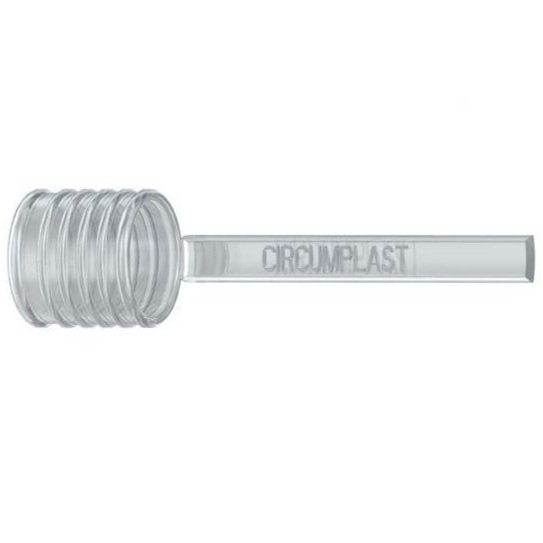Introduction | Consent | Preparation | Consultation | Method of Newborn Circumcision | Benefits | Aftercare | Possible Complications of Newborn Circumcision
Congratulations on the newborn in the family. Circumcision is the surgical removal of the foreskin. The ideal age of newborn circumcision is from 3 days to 8 weeks. This is the parents’ guide for newborn Circumcision at London Circumcision Centre. We explain the preparation, informed consent, consultation, aftercare and complications of newborn circumcision.
Please provide us with the following information for your baby or fill out the medical form:
- Your baby's gestational age
- Last recorded weight of the baby
- Any family history of bleeding disorders
- Let us know if your baby is taking any medication
- Inform us if your baby is suffering from a medical condition
- Please share any concerns you might have had about scans during pregnancy.
Appointment Day Documents
On the appointment day, please ensure you have the following documents:
Child's Red Book or Birth Certificate: Bring either the child's Red Book or birth certificate (if issued) as proof of identity.
Photo ID for Both Parents: Present photo identification for both parents (e.g., passport or driver's license). Circumcision cannot proceed without these documents.
The presence of Both Parents and Consent
For children under 16 years of age, both parents must be present to sign the consent form. If you are a single parent or have particular circumstances preventing both parents from attending, please contact us before the appointment. Email us if both parents cannot be present, and we will provide further guidance.
Arrival Time and Parking
We recommend arriving 20-30 minutes before your scheduled appointment. Please note that there is no on-site parking at the clinic, so this extra time allows for parking arrangements before your appointment. There is free 3-hour parking at ASDA Leyton, a 10- 15-minute walk.
Clinic Address
Leyton Healthcare: Oliver Road Polyclinic, 4th Floor Operative room, 175 Oliver Road, East London E10 5LG
Preparation
Paracetamol Syrup (120mg/5ml)
One hour before the appointment, give 1 ml to children under two months old or 2.5 ml to those over two months old. This will help manage any discomfort your baby may experience during the procedure. Many parents are curious if they can give paracetamol to under two-month-old baby. Yes, you can give paracetamol to a baby under two months old. However, the dosage should be calculated according to the baby's weight (20 mg per kg body weight) if the baby is under two months old.
Arrival at the Clinic
When you arrive, check in at the front desk. Clinic staff will check your documents and record them in our system. You'll wait in our waiting area, and we'll call you into the private operating room when the paediatric surgeon is ready for consultation and circumcision.
Before the Procedure
Your son will have an initial assessment for circumcision by the doctor, and we will ask you to sign the consent form, during which you can ask questions. The doctor will ensure your baby is suitable for the circumcision. Expect to be at the Oliver Road Polyclinic, Leyton, for 30 to 60 minutes.
Holding the baby during the procedure
Our nurses hold the baby during the procedure according to the UK Royal College of Nursing clinical holding policy. We donot use any holding restraint board.
Type of Anaesthetic and Pain relief
Before the procedure, the doctor numbs the penis with a local anaesthetic, which takes effect in about 90 seconds. We will ask to feed the baby for 5 minutes. This ensures no pain during the circumcision. The anaesthetic lasts up to 1-2 hours.
Will Your Child Cry?
Every child is different. Some cry during the injection, while others may sleep during the procedure. Some start crying when undressed and placed on the operative bed.
Will Your Child Be Awake?
We use a local anaesthetic to numb the foreskin only, so your baby won't be asleep (no general anaesthesia). Some babies and children may find comfort in using a pacifier.
Newborn Circumcision with Ring Method (Circumplast Device)
What Is Ring Circumcision for the Newborn?
Circumcision removes the foreskin of the penis, often done in infancy for cultural or religious reasons using a plastic ring called Circumplast or Plastibell devices. It can also be performed for medical reasons, usually related to foreskin issues.
The presence of Both Parents and Consent
For children under 16 years of age, both parents must be present to sign the consent form. If you are a single parent or have particular circumstances preventing both parents from attending, please contact us before the appointment. Email us if both parents cannot be present, and we will provide further guidance.
Arrival Time and Parking
We recommend arriving 20-30 minutes before your scheduled appointment. Please note that there is no onsite parking at the clinic, so this extra time allows for parking arrangements before your appointment.
Preparation
Paracetamol Syrup (120mg/5ml)
One hour before the appointment, give 1 ml to children under two months old or 2.5 ml to those over two months old.
Arrival at the Clinic
When you arrive, check-in at the front desk. Clinic staff will check your documents and record them in our system. You'll wait in our waiting area, and we'll call you into the private operating room when the paediatric surgeon is ready for consultation and circumcision.
Before the Procedure
Your son will have an initial assessment for circumcision, and we will ask you to sign the consent form, during which you can ask questions. The doctor will ensure your baby is suitable for the circumcision. Expect to be at the Oliver Road Polyclinic, Leyton, for 30 to 60 minutes.
Type of Anaesthetic and Pain relief
Before the procedure, the doctor numbs the penis with a local anaesthetic, which takes effect in about 90 seconds. We will ask to feed the baby for 5 minutes. This ensures no pain during the circumcision. The anaesthetic lasts up to 1-2 hours.
Will Your Child Cry?
Every child is different. Some cry during the injection, while others may sleep during the procedure. Some start crying when undressed and placed on the operative bed.
Will Your Child Be Awake?
We use a local anaesthetic to numb the foreskin only, so your baby won't be asleep (no general anaesthesia). Some babies and children may find comfort in using a pacifier.
Newborn Circumcision with Ring Method (Circumplast Device)
What Is Ring Circumcision for the Newborn?
Circumcision removes the foreskin of the penis, often done in infancy for cultural or religious reasons using a plastic rings called Circumplast or Plastibell devices. It can also be performed for medical reasons, usually related to foreskin issues.
Benefits of Circumcision
Circumcision is often non-therapeutic at this age and is usually done for cultural, religious, or perceived health reasons. Some potential benefits of circumcision include reduced risk of urinary tract infections, HIV transmission, and penile cancer.
Complications of newborn circumcision
Circumcision carries some risks, including bleeding, infection, injury to the head of the penis, removal of too much or too little skin, and ring migration. Non-acute risks include adhesions, buried penis and meatal stenosis.
What happens during the Circumcision?
Specific criteria must be met, including a healthy baby over 2.5 kg (over 6 lbs) with normal penile anatomy, no bleeding disorders in the family, and no penile anomalies. The newborn circumcision is typically performed using local anaesthesia with a plastic device like the Circumplast or Plastibell ring. Here are the steps:
1. The baby is gently restrained and wrapped.
2. The penis is cleaned with antiseptic.
3. Local anaesthesia is administered.
4. Adhesions are gently separated.
5. Frenular vessels are cauterised to decrease the incidence of bleeding.
6. The ring is applied for haemostasis.
7. The foreskin is estimated and excised.
8. The excess skin is removed, and bleeding is checked.
9. The baby is discharged home, and the wound is examined before leaving.
10. Stitches may be necessary if the ring is unsuitable.
These steps are aimed at a painless circumcision procedure.
Aftercare advice for baby circumcision
After the operation, the penis will look slightly swollen behind the Circumplast ring (shaft of the penis) for some days. The swelling will gradually settle after the plastic ring comes off.
What aftercare is required for newborn Circumcision?
Day 0 (on the day of the Circumcision)
Pain relief: Some discomfort might occur, so we recommend pain relief medication (usually Paracetamol or Calpol) for the first 48 hours. Always read the instructions on the bottle. The doctor will advise you about the dosage if the baby is under two months old.
You can also use ibuprofen if the child is over three months old. Ibuprofen should be given after feeding or food and not used if the child has asthma.
Apply numbing gel—Instillagel or OptiLube Active four hours daily for only 12-24 hours inside and outside the ring. (Please buy it from a Local pharmacy without a prescription.)
You could wash with water if poo/stool goes into the ring by splashing of water.
Please keep the provided prescriptions (Fusidic acid cream and Co-Amoxilcav) safe and buy them only from your local pharmacy if your doctor advises.
After you leave, there should be no bleeding except a few blood stains. Open the nappy hourly for the first 4 hours and then every 2 hours to check for blood. If you see excessive blood, the baby needs to be seen immediately. Contact our surgeon directly. Please take the baby to the nearest Hospital's Accident and Emergency Department if you cannot contact the surgeon. If transport is a problem, call an ambulance by dialling 999.
Day 1 (next day)
· The wound must be kept clean to avoid infection. Wash with water if the stool/poo goes inside the ring.
· Give the first bath 24 hours after the circumcision procedure, then continue morning and evening until the Circumplast bell comes off. Soak the baby for 5-10 minutes twice a day.
· Put Vaseline outside the ring and under the nappy with each change.
· Apply the provided Activon Medicated Honey three times a day, near the thread from the next day until the ring comes off, and apply Activon on the wound for two more days after the ring comes off. Do not put Vaseline when you put honey on the wound.
Rest of days of Circumcision Healing
Carry on above until the ring falls off within 7-10 days. A white or yellow scab over the head of the penis inside the ring is normal.
What NOT to do after Circumcision
Please do not put any cream or Vaseline except for numbing cream Instillagel (numbing cream) inside the Circumplast ring.
Please do not put anything inside the ring to clean it.
What to watch out for after Circumcision
· Baby has a significant temperature, and stays is more significant than 37C.
· Excessive bleeding.
· Extreme irritability/crying
· Difficulty in passing urine.
· Signs of infection (After DAY 3 days if there is more redness, discharge of pus or high temperature)
· The plastic ring (Circumplast) is applied to stop bleeding and should come off in 10 days; if by the tenth day, it has not come off, please call the surgeon to be removed.
· Some swelling and a mild redness of the area are expected. During the first three days after the ring falls off, the skin around the edge of the wound becomes soft and yellowish and may even look like pus. This may appear after the ring has fallen off. This is not a sign of infection. Carry on cream/honey as advised three days after the ring comes off.
· If you have had any problems or other circumcision-related concerns about the baby, you should contact the surgeon so that a review can be arranged.





